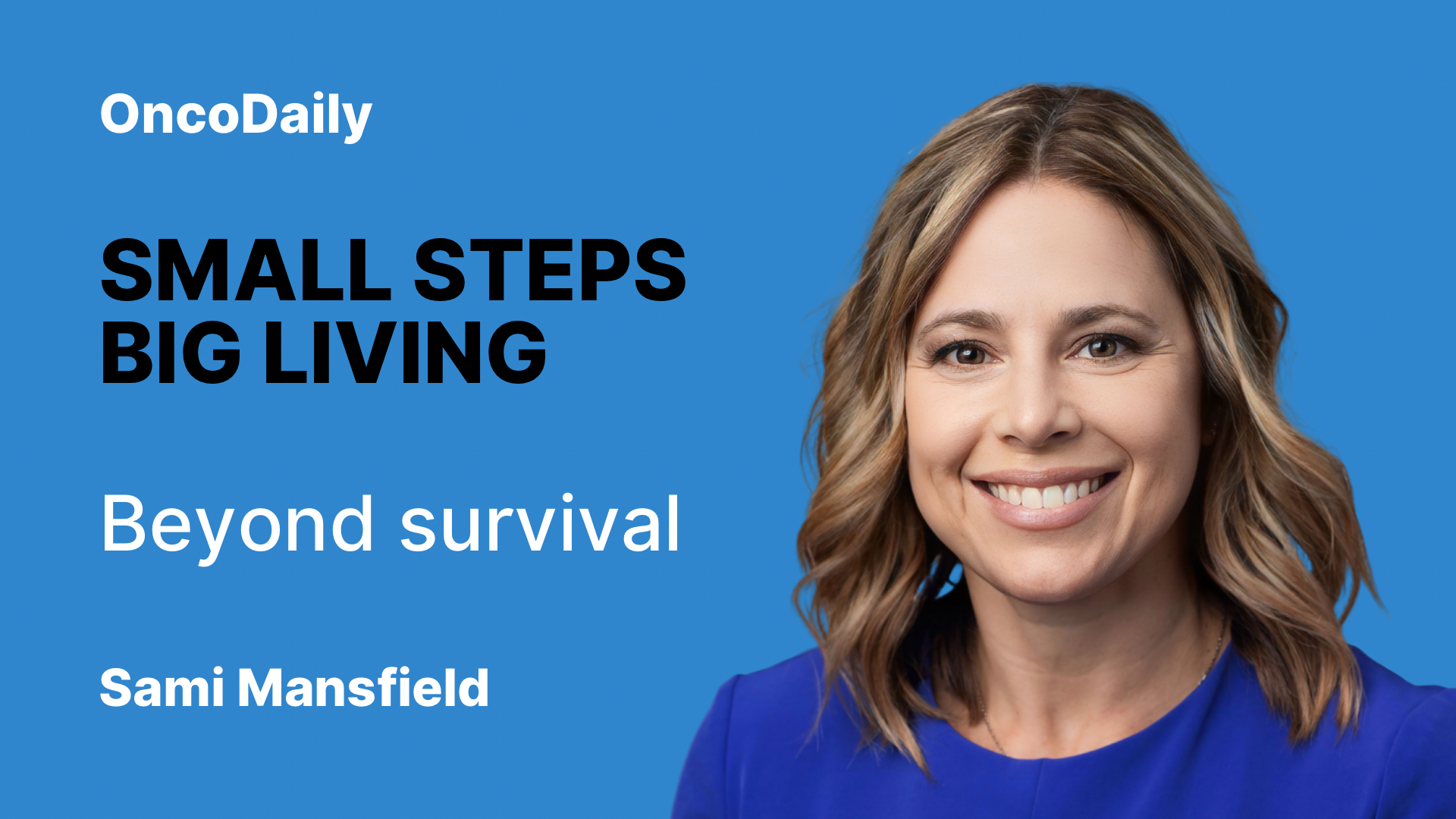“Part 1: Beyond Survival—Why Lifestyle Medicine Belongs in Survivorship Care
National Cancer Survivorship Month highlights the more than 18 million cancer survivors in the U.S. and over 50 million worldwide, a number expected to rise significantly by 2040 (American Cancer Society [ACS], 2024; World Health Organization [WHO], 2025). This reflects the success of early detection and treatment. However, behind these encouraging statistics lies a deeper question: How well are survivors living after cancer treatment concludes?
While breakthrough drug therapies often make headlines, the revolution in lifestyle medicine is increasingly reshaping cancer care. Although treatment and lifestyle recommendations have primarily function independently, what if we created more opportunities for integration?
Could we impact not only how long our patients live but also how well they live? Not only do the patients benefit, but we’ve highlighted in this blog how these strategies are critical to supporting our health care professionals.
Research has consistently shown that lifestyle interventions – primarily those targeting exercise, nutrition, and maintaining a healthy body composition – can significantly improve the quality of life during and after cancer treatment. However, these strategies are not frequently utilized in routine oncology practice. Evidence suggests that despite their proven efficacy in clinical trials, barriers such as limited resources, lack of training, and resistance to change contribute to their underutilization in everyday clinical settings.
Although there is an increase in clinical trials focusing on clinical outcomes, the significant impact of lifestyle medicine on common side effects, such as fatigue, and its effect on mental health, daily functioning and accessibility often gets understated.
It is a common misconception that health professionals are disinterested in lifestyle medicine. In reality, many lack awareness of the guidelines, especially those specific to cancer care (Williams, 2015), or face a severe shortage of time, training, and supportive resources (Joseph, 2022). Some worry that patients won’t change or that these conversations will damage trust (Koutoukidis, 2018).
Others struggle with their own self-care, making it harder to model healthy behavior.
These barriers are real – but they are not insurmountable. Clear guidelines, behaviorally informed tools, and consistent reinforcement can help clinicians and patients alike. And the return on investment is enormous: approximately 42% of cancer cases and 45% of cancer-related deaths are linked to modifiable risk factors such as diet, inactivity, alcohol, and tobacco (American Cancer Society, 2024; Kohler et al., 2016).
Yet, lifestyle medicine still struggles for equal footing. A new drug that offers just months of extended survival is rapidly adopted, often with a cascade of added prescriptions. Meanwhile, low-cost, evidence-based lifestyle interventions—with the power to improve quality of life, reduce recurrence, and enhance healthspan – are underprescribed and underutilized.
Have we become so focused on the 5-year survival rate – a metric introduced in the 1930s – that we’re overlooking healthspan? Survivorship means more than being alive. It means being well.
We already have the tools. The American Institute for Cancer Research (AICR) and the American Cancer Society (ACS) recommend plant-predominant diets, regular physical activity, healthy weight management, limited alcohol, and tobacco cessation – not just for prevention, but for life after treatment. Yet, studies show that fewer than 25% of survivors meet basic lifestyle goals.
Saying ‘make healthy choices’ isn’t enough. For many patients, it’s as vague as saying, ‘You have breast cancer’ without any roadmap. Lifestyle medicine must be defined, demystified, and integrated as a credible part of cancer care – not a fringe option. Nakata, R. (2018).
This June, the Cancer Survivorship blog series, ‘Small Steps, Big Living,’ breaks down each of ACLM’s six pillars into practical strategies for cancer survivors. Each post is designed to help survivors, caregivers, and clinicians build a realistic, empowered approach to recovery.”
written by Sami Mansfield
Sami Mansfield is an exercise oncology and lifestyle medicine consultant with endless curiosity and persistence. As the founder of Cancer Wellness for Life, Sami has dedicated her career to empowering cancer survivors and clinicians through innovative, evidence-based programs that improve health outcomes while optimizing cost-efficiency.
Sami is a contributing author to groundbreaking guidelines, including the ASCO Guidelines on Exercise, Nutrition, and Weight Management, and has helped shape numerous state cancer control plans.
She is the current chair of the Cancer Member Interest Group for the American College of Lifestyle Medicine, where she drives forward initiatives emphasizing the connection between science and implementation. Her patient-facing programs like BUILD and My Lifestyle Shift have reached global audiences, transforming lives through the pillars of lifestyle medicine.
You can also read:
Mental Health in Healthcare – Threading the Needle from Provider to Patient: Sami Mansfield
To all my oncology colleagues – Self-care should be your top healthcare priority: Sami Mansfield
Raising a Glass or Raising the Risk? Rethinking Social Norms Around Alcohol: Sami Mansfield
More than Survival – Using Lifestyle to Improve Healthspan in Colorectal Cancer: Sami Mansfield
